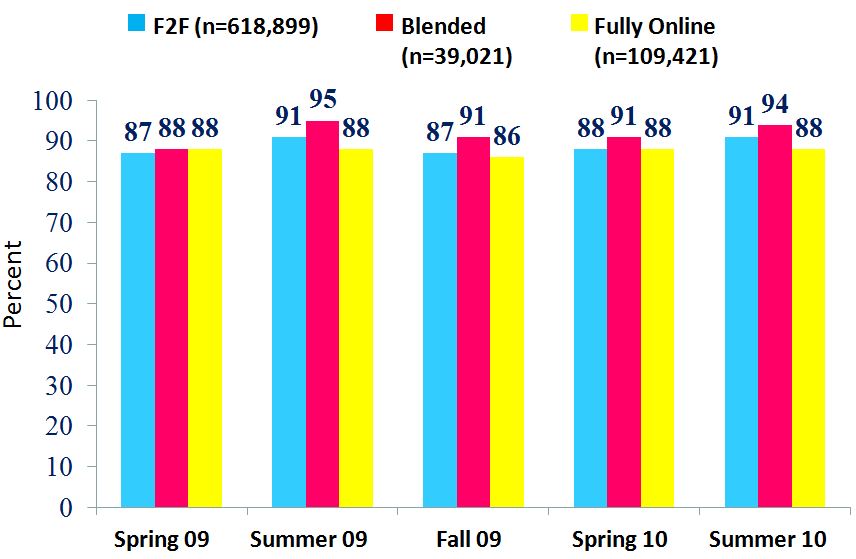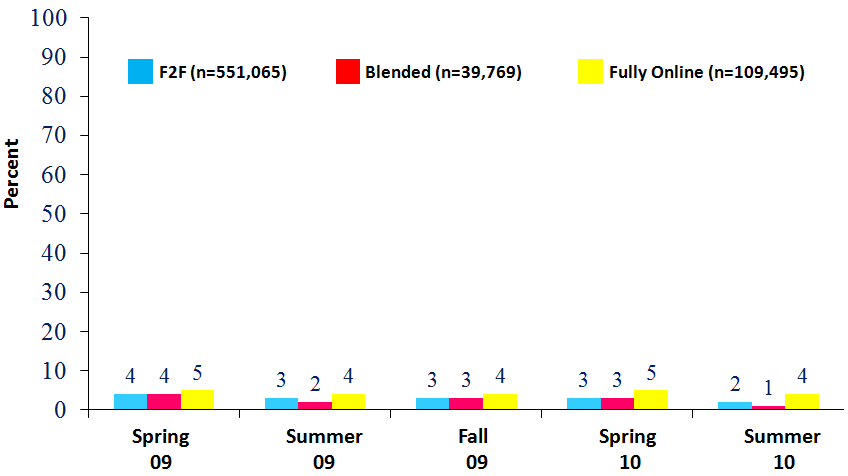Blended courses have proven to be among the most popular choices for students at institutions where they are offered. At first glance, this popularity seems intuitive because blended courses allow students and faculty to take advantage of much of the flexibility and convenience of an online course while retaining the benefits of the face-to-face classroom experience.
Although fully online learning has become well established in higher education, many institutions appear to be struggling with conceptualizing and implementing blended learning. Yet, where blended courses have succeeded, they have most often done so when strategically aligned with an institution’s mission and goals. The development and delivery of blended courses can be used to address a variety of institutional, faculty, and student needs.
- For universities, blended courses can be part of a strategy to compensate for limited classroom space, as well as a way to think differently about encouraging faculty collaboration.
- For faculty, blended courses can be a method to infuse new engagement opportunities into established courses or, for some, provide a transitional opportunity between fully face-to-face and fully online instruction.
- For students, blended courses offer the conveniences of online learning combined with the social and instructional interactions that may not lend themselves to online delivery (e.g., lab sections or proctored assessments).
If an institution’s blended learning strategy can be designed to address the needs and dynamics of all three constituencies (institution, faculty, and student) simultaneously, then blended learning can become a powerful force for institutional transformation.
As cited in the U.S. Department of Education’s recent “Evaluation of Evidence-Based Practices in Online Learning: A Meta-Analysis and Review of Online Learning Studies” (Revised September 2010), “Students in online conditions performed modestly better, on average, than those learning the same material through traditional face-to-face instruction” (p. xiv) and, notably, “Instruction combining online and face-to-face elements had a larger advantage relative to purely face-to-face instruction than did purely online instruction” (p. xv). Not only do students perform better in blended courses, but the electronic resources inherent in the modality offer other advantages as well. For example, student performance analytics can be used to study and better understand student learning. Data analytics can also identify students who need early intervention, thus increasing retention. The online tools available in blended courses can also significantly enhance student engagement, ensuring that all students participate in course discussions and benefit from collaborative learning.
When properly implemented, blended learning can result in improved student success, satisfaction, and retention. The University of Central Florida has consistently seen such results since the inception of its blended learning initiative in 1997. The data below illustrate that quality for the NGLC grant period.
Contact UCF’s Center for Distributed Learning at distrib@ucf.edu for more information regarding current UCF statistics and ongoing research.
UCF’s Blended Learning Growth
| Blended Learning | 2009-2010 Academic Year | Totals since 2002 |
|---|---|---|
| Sections | 681 | 5,031 |
| Registrations | 24,241 | 160,860 |
| Student Credit Hours (SCH) | 70,438 | 476,823 |
UCF’s blended courses consistently rank higher than other modes in student course evaluations (see the table and graphs below) and have the highest levels of student success and the lowest withdrawals of any modality—including face-to-face. Furthermore, faculty surveyed after teaching blended courses express clear willingness to continue teaching in that modality. (Note: In the charts that follow, student “success” is defined as students achieving a grade of “C” or better. F2F stands for “Face to face.”)
Comparison of “Excellent” UCF Student Evaluation Ratings by Course Modality (n=672,185)
| Course Modality | % Overall “Excellent” |
|---|---|
| Blended | 51.2% |
| Fully Online | 48.3% |
| Face to Face | 48.2% |
| Lecture Capture (with classroom) | 43.4% |
| Lecture Capture (no classroom) | 41.6% |

UCF Student Success Rates by Modality

UCF Student Withdrawal Rates by Modality




